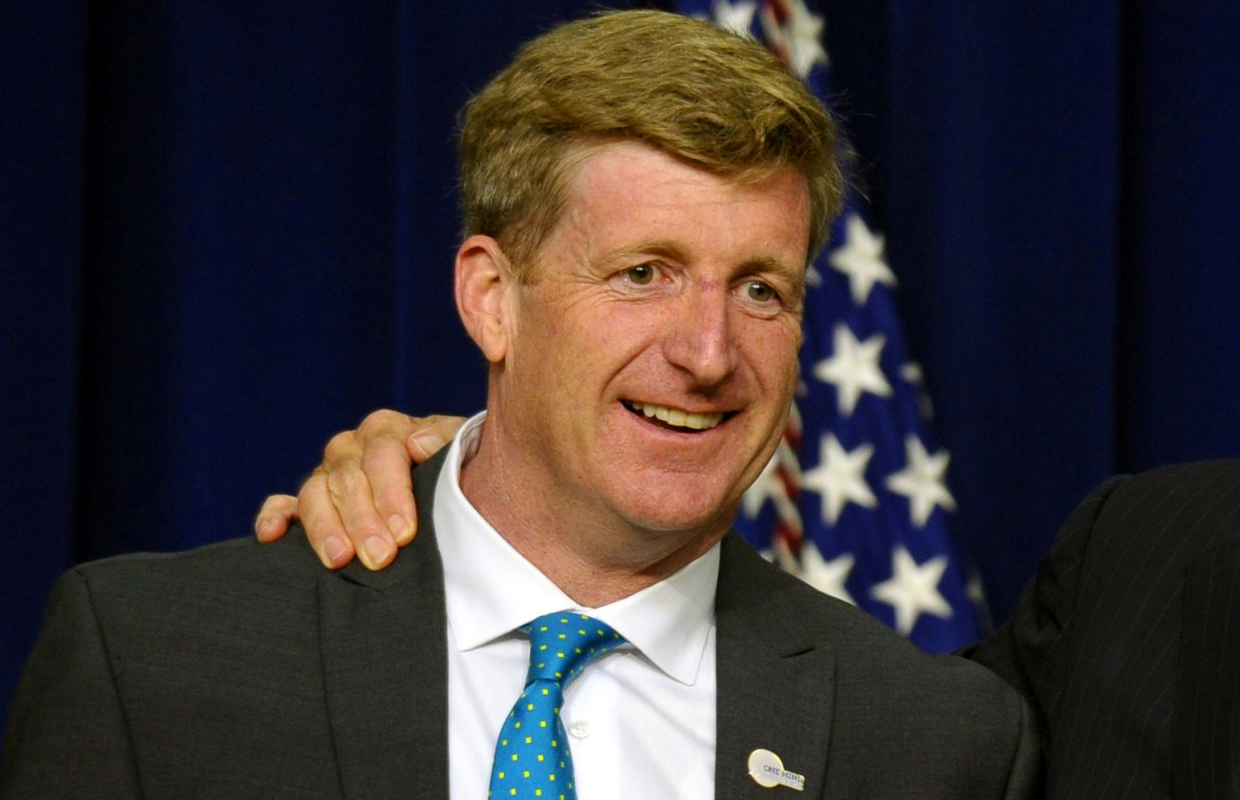
Politics
Anti-Marijuana Group Project SAM Uses Federally Funded Non-Profits to Push 2015 Legislation
Earlier this year, a wave of conservative states passed legislation legalizing possession of medical cannabis extracts high in cannabidiol (CBD) and low enough in ∆-9 tetrahydrocannabinol (THC) that they could be classified as industrial hemp. The legislation was championed primarily by what the Washington Post dubbed “The Mommy Lobby,” a loosely-affiliated network of parents of children with intractable epilepsy. The Mommy Lobby was motivated in their quest for high-CBD medical cannabis by Dr. Sanjay Gupta’s groundbreaking CNN documentaries “Weed” and “Weed 2.” The specials featured the stories of epileptic children experiencing once-thought impossible recoveries using a high-CBD medical cannabis extract in Colorado, where marijuana is legal and regulated for recreational and medicinal uses.
Shortly after the shows aired, laws were passed in Utah, Iowa, Wisconsin, Missouri, Kentucky, Tennessee, Alabama, Florida, North Carolina and South Carolina that exempt possession of high-CBD cannabis extracts for qualifying patients suffering from intractable epilepsy. The specifics of the laws vary from state to state.
While much of the established legal medical marijuana industry and activist movements view high-CBD laws as overly restrictive, Project SAM (Smart Approaches to Marijuana), a coalition of proponents of anti-marijuana legislation, believes these measures go too far to permit the use of marijuana in society. They’re working with local organizations in some of these states to slow the “300 mile per hour freight train of legalization.”
In the state of Utah, which was the first to pass high-CBD medical cannabis legislation in March, Project SAM is working with community partners that receive federal funding to push anti-cannabis legislation for the 2015 state legislative session. It’s unclear if a similar strategy is being employed in other CBD states.
Who is Project SAM?
Project SAM was co-founded by Kevin Sabet, who served as a drug policy advisor in the Obama White House during 2009-2011. Sabet is the self-proclaimed “quarterback” of the modern anti-drug movement. The group’s other co-founder is Patrick Kennedy, son of longtime Massachusetts Senator Ted Kennedy, and reformed cocaine and OxyContin addict.
According to Dr. Sunil Aggarwal, a well-known medical cannabis researcher and former classmate of Sabet’s, “Project SAM’s anti-marijuana priorities include emphasizing ‘lifelong stigma’ of pot-related arrests, the prospect of Big Marijuana marketing to children, the industry being taken over by Big Tobacco and seeking federal research on pharmaceuticalized medical marijuana products.”
He says the campaign relies on debunked propaganda to push its messaging.
Project SAM, as well as other drug reform organizations, have been accused of taking pharmaceutical lobby money in order to combat marijuana legalization laws. In February, Patrick Kennedy headlined an anti-drug event hosted by the Community Anti-Drug Coalition of America (CADCA), sponsored by Purdue Pharmaceutical, the manufacturer or OxyContin. CADCA has taken a similar hard-line stance to the concept of medical cannabis policy reform.
Since the early ’90s, the federal government has funded grants to local anti-drug coalitions, which have increased in response. These organizations rely on a combination of government and private funding to operate. Under the Drug Free Communities Act of 1997 the budget for these coalitions was set to increase about $10 million annually.
According to The Nation’s Lee Fang:
“…the group’s [Partnership for kids, formerly Partnership for a Drug Free America] largest donors include Purdue Pharma, the manufacturer or OxyContin, and Abbot Laboratories, maker of the opiod Vicodin. CADCA also counts Purdue Pharma as a major supporter, as well as Alkermes, the maker of a powerful and extremely controversial new painkiller called Zohydrol. The drug, which was released to the public in March, has sparked a nationwide protest, since Zohydrol is reportedly ten times stronger than OxyContin. Janssen Pharmaceutical, a Johnson & Johnson subsidiary that produces the painkiller Nucynta, and Pfizer, which manufacture several opioid products, are also CADCA sponsors. For corporate donors, CADCA offers a raft of partnership opportunities, including authorized use of the CADCA logo for your company’s marketing, website, and advertising materials, etc.”
Project SAM has affiliate organizations in a handful of states, the majority of which have either received or applied for a Drug Free Communities Grant or work closely with an organization that has.
Doublespeak: Project SAM Supports Cannabis Medicines
The community groups Project SAM is working through often receive federal grant money and have actively worked in politics to oppose any state-level laws permitting the use of cannabis for any reason.
Project SAM affiliates are now pushing the message that CBD legislation is a foot in the door for full-blown medical marijuana and in order for “substances within the cannabis plant” to be utilized as medicines, they must be strictly regulated and pharmaceuticalized.
The direction Project SAM is pushing for should sound familiar. THC, which was once thought to be the only active ingredient in cannabis, was isolated, synthesized and approved by the FDA to be prescribed as a Schedule III drug in 1985. The move was made in the wake of claims cannabis use was alleviating the symptoms of HIV/AIDS during the height of the epidemic. Marinol, as the drug would come to be known, has wildly unpleasant side effects and is not effective in treating most conditions patients utilize medical cannabis for.
By the early ’90s, well-known Israeli researcher Dr. Raphael Mechoulam (who is credited with first isolating and identifying both THC and CBD in the 1960s) concluded that the compounds occurring in cannabis work best as an entourage. He described the process as “the entourage effect,” meaning the medicine works best in its whole plant form and that the healing properties of cannabis are created by the synergy of terpenoids and cannabinoids found in whole-plant cannabis. Different cannabinoids have been shown to moderate the effects of others and patients using whole-plant cannabis medicines in states where it’s legal and unrestricted by cannabinoid content have witnessed some of the most dramatic cases of recovery in patients with a wide and growing variety of ailments. The entourage effect is hard to legislate because it can’t be understood if it’s being viewed through a lens of pharmacologicalism, the foundation for modern Western medicine.
What About the Kids?
Dr. Gupta succeeded in reframing the medical marijuana debate. The battle for safe access to medical cannabis struck a powerful chord in so many Americans because suddenly the patients were children, innocent to the concept of recreational drug use. For the first time, Americans, otherwise passive or generally opposed to medical cannabis, were confronted on cable television (proliferated via Youtube) with footage of real children in serious need of cannabis.
After using medical cannabis, the children in the special stopped seizing, they ate, they played, they slept and their minds began to grow like the other children around them. The ER visits waned to a stop. Parents, friends and families of epileptic children around the nation finally discovered what could be the miracle they had been anxiously awaiting.
Utah’s CBD bill, dubbed Charlee’s Law, was championed in large part by the “Mormon Moms” who made waves in the state when they publicly declared that they wanted to try high-CBD cannabis medicines to treat their severely epileptic children and announced they planned to fight for the legal right to do so in the state’s legislature during the 2014 session.
The governor signed the bill, H.B. 105, into law in March. Days later the 6-year-old namesake of the bill, Charlee Nelson, passed away of complications of Batten’s Disease. The program went into effect early July and so far 11 patients in the state have registered to be exempted from possession of high-CBD medicines, although there’s no legal distribution method within the state. Families must break federal law to actually obtain the medicine.
According to Rob Timmerman, executive director for the South Salt Lake Coalition for Drug Free Youth, there’s now an urgent need for anti-marijuana legislation in Utah. Timmerman’s group, which receives federal grant money, strongly opposed and worked against the CBD legislation. Timmerman says the primary goal is to protect children and that new legislation must be introduced before the medical cannabis problem gets out of hand. Timmerman also directed the prominent Use Only As Directed campaign in Utah, which has one of the highest rates of pharmaceutical painkiller addiction and death in the nation.
Drug Free Communities and The Utah Marijuana Compact
Timmerman says his group is working with a broader and still nameless coalition affiliated with Project SAM. He is working with Kye Nordfelt, of SMART, a Utah County non-profit organization that works in youth drug prevention. Both groups are recipients of federal Drug Free Communities grants, in addition to private non-profit fundraising.
Drug Free Communities grants were a result of the Drug Free Communities Act of 1997. One year earlier, California became the first state in the nation to approve a voter initiative legalizing medical cannabis. The grants are awarded to community coalitions that work in various facets to prevent youth drug abuse.
The nameless coalition has adopted guidelines, The Utah Marijuana Compact (UMC), in order to guide the conversation in what they call “responsible approaches to medical cannabis.” The UMC was inspired by the Utah Immigration Compact (UIC). The UIC was adopted in 2010 and signed by local business, law enforcement and religious groups to guide state immigration policies. The UIC was viewed as a success in that it took a more compassionate stance towards immigrants and guided a unified vision for political common ground.
The basic tenants of the UMC are dramatically similar to the platforms presented by Project SAM. They include protecting children from cannabis, protecting the state economy from a drugged workforce, promoting pharmaceutical cannabis derived medicines approved by the FDA and distributed only in pharmacies and maintaining the role of police in enacting medical cannabis regulations, rather than a civil or medical regulatory body.
Timmerman’s group, the South Salt Lake Coalition for Drug Free Youth, is headquartered across the street from the South Salt Lake Police Department. It was organized in 2003 under the Utah Federation for Youth. In 2004 the group received its first 5-year Drug Free Communities grant from the federal government. They re-applied for the grant in 2009 and received it; they are now ineligible for further federal grant money under the Drug Free Communities Act.
The South Salt Lake Coalition for Drug Free Youth was a major opponent of Utah’s H.B. 105 and maintains that the families who felt they could benefit from a high-CBD medical cannabis extract should have waited for a medicine to be developed and approved by the FDA rather than push for its legality in the state legislature. It plans to actively oppose any legislation in the state that would expand access any further than it has already been permitted.
The drive for preemptive anti-marijuana legislation that the nameless coalition plans to propose in 2015 is being fueled primarily by facets of both government and private organizations dependent on criminal justice money. The effort is being spearheaded by Project SAM Utah Director Tibby Milne, who also serves as the state program administrator of Drug Abuse Resistance Education (DARE), which received federal funding through most of the ’80s and ’90s until it failed to prove its efficacy and lost its federal funding in 1998. Today it still operates on budgets of $200 to $300 million annually, although mostly funded by private donors.
Because cannabis is the most widely used illegal drug, it represents a major share of law enforcement efforts both in Utah and around the nation. The state recently loosened civil asset forfeiture laws, making wildly-available cannabis a lucrative choice to make law enforcement’s public enemy #1 in the state.
Medical Cannabis Reform Efforts Keep Moving Forward
Proponents of Utah’s H.B. 105 are continuing their effort towards actually gaining safe access to high-CBD medical cannabis extracts. At this time the 11 enrolled patients are anxiously awaiting the availability of the cannabis extract Alepsia, produced in Colorado, which should be available by mail to them this month.
Many patients in the state currently rely on the black market for medical cannabis because at this time it remains completely illegal for the majority of Utah residents to use or possess for any reason. In July, President Obama stated he believes cannabis policy should be left to the states, leaving patients who could benefit from medical cannabis everywhere in limbo while government-funded groups urgently push the message that patients must wait for the federal government to approve pharmaceutical cannabis synthetics and derivatives.
In August of this year, the national Centers for Disease Control and Prevention awarded Utah a $1 million grant to beef up its efforts to reduce the higher-than-the-national average rates of prescription painkiller death. Around the same time, researchers at Johns Hopkins Bloomberg School of Public Health and the Philadelphia Veterans Affairs Medical Center determined that although the rates of prescription painkiller deaths have been increasing nationally, states with laws permitting medical cannabis saw a 25 percent decline in prescription painkiller deaths.
Law enforcement and anti-drug coalitions funded in combination with federal grant money and private contributions from pharmaceutical companies have become the face of the anti-cannabis movement in Utah and nationally. Despite the real and present danger of prescription drug abuse they have turned the focus on cannabis, a non-fatal substance with the potential of replacing the lucrative drug market funding the opposition.
What do you think about Project SAM? Tell us your thoughts in the comments.
























